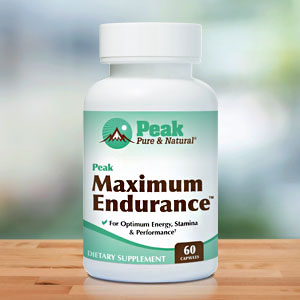Get Easy Health Digest™ in your inbox and don’t miss a thing when you subscribe today. Plus, get the free bonus report, Mother Nature’s Tips, Tricks and Remedies for Cholesterol, Blood Pressure & Blood Sugar as my way of saying welcome to the community!
Exercise’s immune response trigger reveals how it fights disease

We all know that exercise is good for us. And that’s an understatement.
Regular exercise is preventive medicine. It can lessen your risks of ending up with heart disease, diabetes, even cancer.
Not getting even a modest amount of exercise, like walking, is why “couch potatoes” do not fare well when it comes to living a long, healthy life.
But did you ever wonder exactly what it is about exercise that helps prevent disease? I mean, what’s happening in your body when you exercise, and how does it keep you healthy?
Researchers at Harvard Medical School have been giving it a lot of thought as well. And they’ve found that it’s more than getting your heart pumping that keeps illness away…
Exercise triggers T-cells that control inflammation
Back in April of 2006, Harvard Health Letter published a paper titled “Inflammation: a unifying theory of disease? Research is showing that chronic inflammation may be the common factor in many diseases.”
Jump to 2023 and Harvard researchers may have the answer to beating it — one that explains the long list of health benefits attributed to exercise…
In a new study, Harvard researchers analyzed what happens in cells taken from the hind-leg muscles of mice that ran on a treadmill regularly. They compared this with muscle cells of mice that ran only once, as well as with mice that were sedentary.
The muscle cells of the mice that ran on treadmills, whether regularly or only once, showed classic signs of inflammation — higher levels of chemicals that promote inflammation.
But both groups also had elevated levels of T-cells in their muscles. And further analyses showed that in both groups, those T-cells lowered exercise-induced inflammation.
Elevated T-cell levels were not seen in the muscle cells of sedentary mice, however. And in the absence of T-cells, their muscle exhibited unrestrained inflammation, marked by the rapid accumulation of inflammation-promoting cells.
“The villain here is interferon”
These muscle cells in the mice that didn’t get exercise also had excessive amounts of interferon, a chemical known to drive inflammation. Further analyses revealed that interferon acts directly on muscle fibers to alter mitochondrial function and limit energy production.
“The villain here is interferon,” says Kent Langston, first author of the study. “In the absence of guardian Tregs [T-cells] to counter it, interferon went on to cause uncontrolled damage.”
“Our research suggests that with exercise, we have a natural way to boost the body’s immune responses to reduce inflammation,” says Diane Mathis, the study’s senior investigator. “We’ve only looked in the muscle, but it’s possible that exercise is boosting Treg activity elsewhere in the body as well.”
That could certainly explain the mountains of research confirming the positive effects of exercise where inflammation was a common denominator — from slowing brain aging to lowering liver stenosis.
Exercise is the superhero
Interferon is known to promote chronic inflammation, a process that underlies many chronic diseases and age-related conditions. That’s why researchers see it as a tantalizing target for therapies aimed at reducing inflammation.
At the same time, T-cells have garnered great interest as potential treatments for a range of immunologic conditions marked by abnormal inflammation.
But if we manage to get our muscles moving on a daily basis, there’s no need to rely on the next wonder drug to beat back inflammation.
If high-intensity or even moderate-intensity workouts are difficult for you, start walking to live longer.
And there are a few nutritious ways to lower inflammation as well…
The polyphenols in your morning cup of coffee are twice as effective at controlling inflammation when you add some milk.
Other plant foods rich in polyphenols also combat inflammation, including onions, green tea, and red grapes.
Turmeric, ginger and black cumin seed oil are particularly good at controlling inflammation. They are immune system modulators, meaning they help keep inflammation in check so it doesn’t run free and wild to cause harm, but let it do its thing when it’s necessary to heal injuries.
And for those times when you indulge in junk food (we all do, right?), a blend of any of these 13 common spices will serve to get the resulting inflammation under control.
Editor’s note: Did you know that when you take your body from acid to alkaline you can boost your energy, lose weight, soothe digestion, avoid illness and achieve wellness? Click here to discover The Alkaline Secret to Ultimate Vitality and revive your life today!
Sources:
Some benefits of exercise stem from the immune system — Eureka Alert
Regulatory T cells shield muscle mitochondria from interferon-γ–mediated damage to promote the beneficial effects of exercise — Science Immunology
Leucocytosis after violent exercise — The Journal of Medical Research
Exercising muscle combats chronic inflammation on its own — Science Daily














